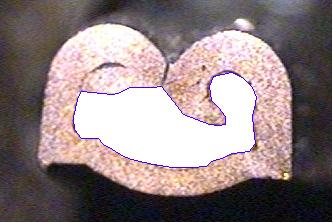ok i couldnt think of where else to go so can some one here help me find the area of this white area in the picture. or on any odd shape like this with no set number of sides
http://www.angelfire.com/nd2/kylekonline/images/TP-18FM64test.jpg
big_k105
11
PFO Founder
Team Colleague
Recommended Answers
Jump to PostI'm afraid that none of us can help you out - the image you posted is 404 (not found).
If you fix up the image location, I'm sure one of us can make a suggestion! :-)
Jump to PostI've tried to open this file and can't do! Are you looking for athe formula to find the area of something? The formula to find the area of a circle is PI * radius squared.
You can't open the attached file? I can ... is there something possibly wrong w/ …
Jump to PostWorks fine for me.
Jump to PostIf it is meant to be solved as an area, what I would do is set it up as a grid and take it from there (combining shapes to become regular shape and then measuring the are of those), because plain old getting it from the picture is very improbable, …
All 13 Replies
Tekmaven
258
Software Architect
Team Colleague
big_k105
11
PFO Founder
Team Colleague
I_Byte
0
Newbie Poster
Dani
4,084
The Queen of DaniWeb
Administrator
Featured Poster
Premium Member
Tekmaven
258
Software Architect
Team Colleague
big_k105
11
PFO Founder
Team Colleague
senterstyle
6
Junior Poster in Training
big_k105
11
PFO Founder
Team Colleague
Wiecek5
0
Newbie Poster
gkdmaths
36
Light Poster
steven_s-h
0
Newbie Poster
steven_s-h
0
Newbie Poster
bigbass2266
0
Newbie Poster
Be a part of the DaniWeb community
We're a friendly, industry-focused community of developers, IT pros, digital marketers, and technology enthusiasts meeting, networking, learning, and sharing knowledge.

